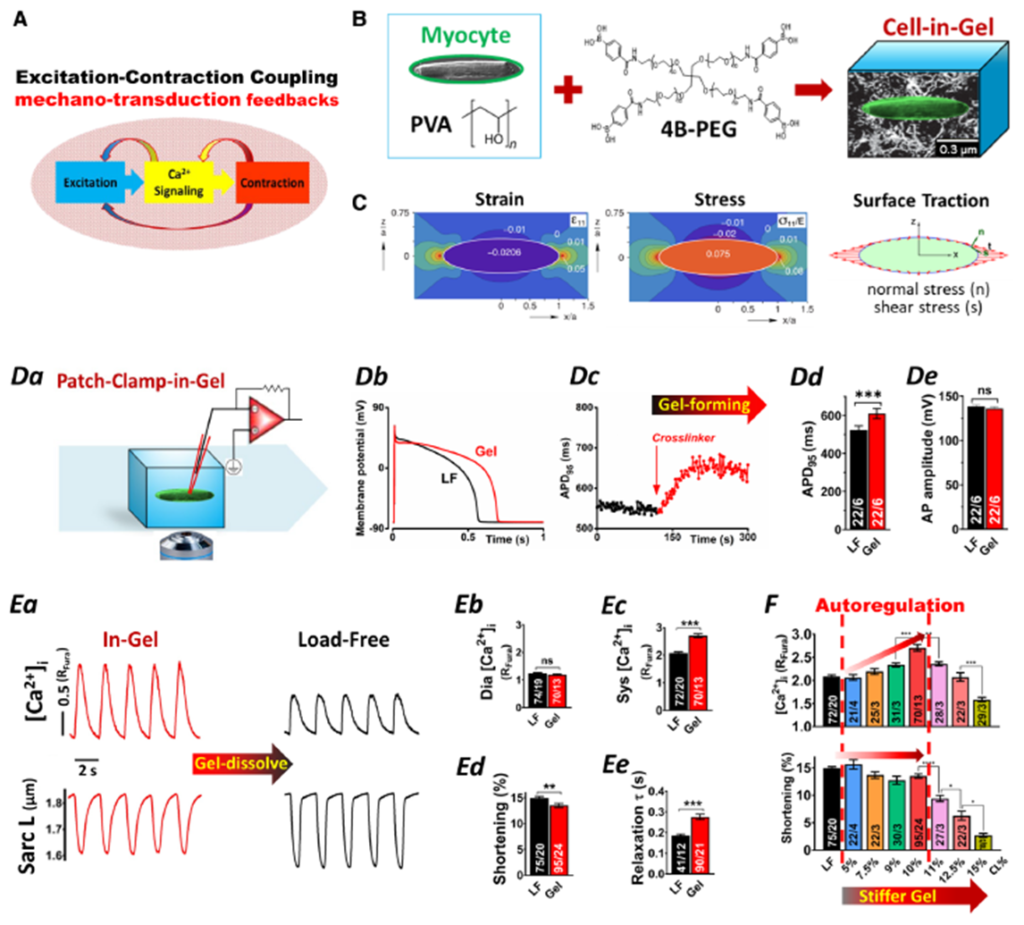Research
Autoregulation of Excitation-Ca2+ Signaling-Contraction (E-C) Coupling
The heart function is controlled by E-C coupling. The classical paradigm of E-C coupling emphasizes the feedforward control: the action potential activates Ca2+ signaling which then activates cardiomyocyte contraction. Our recent studies reveal that the mechanical load during contraction feedback to regulate electrophysiology and Ca2+ signaling, which closes feedback loops in the dynamic system to enable autoregulation of E-C coupling.
The paradigm shift to Autoregulatory E-C Coupling will help answering the big questions on (1) how does the heart regulate the contractile strength in compensatory response to physiological load changes; and (2) why mechanical overload such as hypertension leads to hypertrophy, arrhythmias, and heart failure.

| 4. | Shimkunas R, Hegyi B, Jian Z, Shaw JA, Kazemi-Lari MA, Mitra D, Leach JK, Li X, Jaradeh M, Balardi N, Chen YJ, Escobar AL, Baker AJ, Bossuyt J, Banyasz T, Chiamvimonvat N, Lam KS, Bers DM, Izu LT, Ye Chen-Izu. Mechanical Load Regulates Excitation-Ca 2+ Signaling-Contraction in Cardiomyocyte. Circulation Research. 2021 Mar 19;128(6):772-774. doi: 10.1161/CIRCRESAHA.120.318570. Epub 2021 Feb 19. |
| 3. | Hegyi B, Shimkunas R, Jian Z, Izu LT, Bers DM, Chen-Izu Y*. Mechanoelectric coupling and arrhythmogenesis in cardiomyocytes contracting under mechanical afterload in a 3D viscoelastic hydrogel. Proceedings of National Academy of Sciences USA (PNAS). 2021;118(31):e2108484118. doi: 10.1073/pnas.2108484118. |
| 2. | Mohammad Ali Kazemi-Lari; John Shaw*, Alan S. Wineman; Rafael Shimkunas; Zhong Jian; Bence Hegyi; Leighton Izu; Chen-Izu Y. Viscoelastic Eshelby Inclusion Model and Analysis of the Cell-in-Gel System. International Journal of Engineering Science. Vol.165, 1 Aug 2021,103489. |
| 1. | Izu L, Shimkunas R, Jian Z, Hegyi B, Kazemi-Lari M, Baker A, Shaw J, Banyasz T, Chen-Izu Y. Emergence of Mechano-Sensitive Contraction Autoregulation in Cardiomyocytes. Life (Basel). 2021 May 29;11(6):503. doi: 10.3390/life11060503. (2011). |